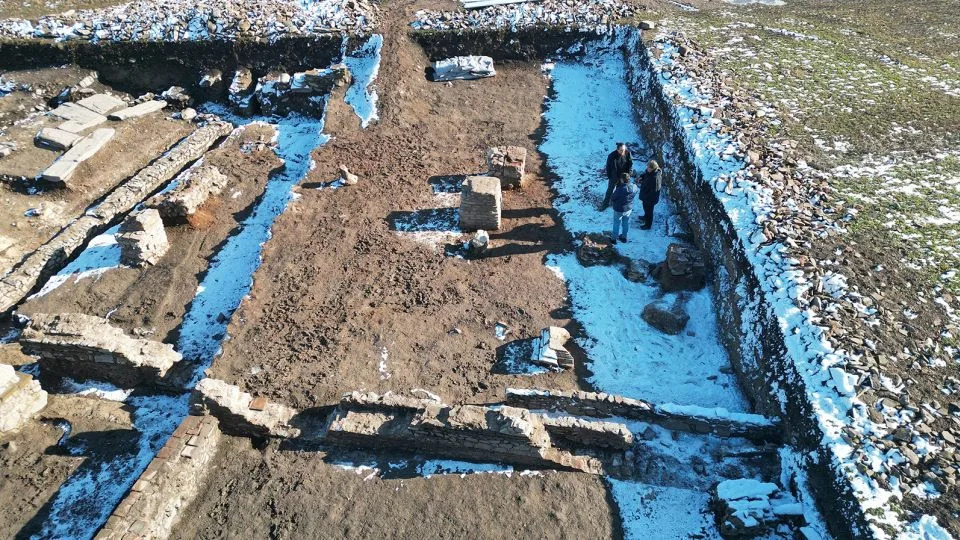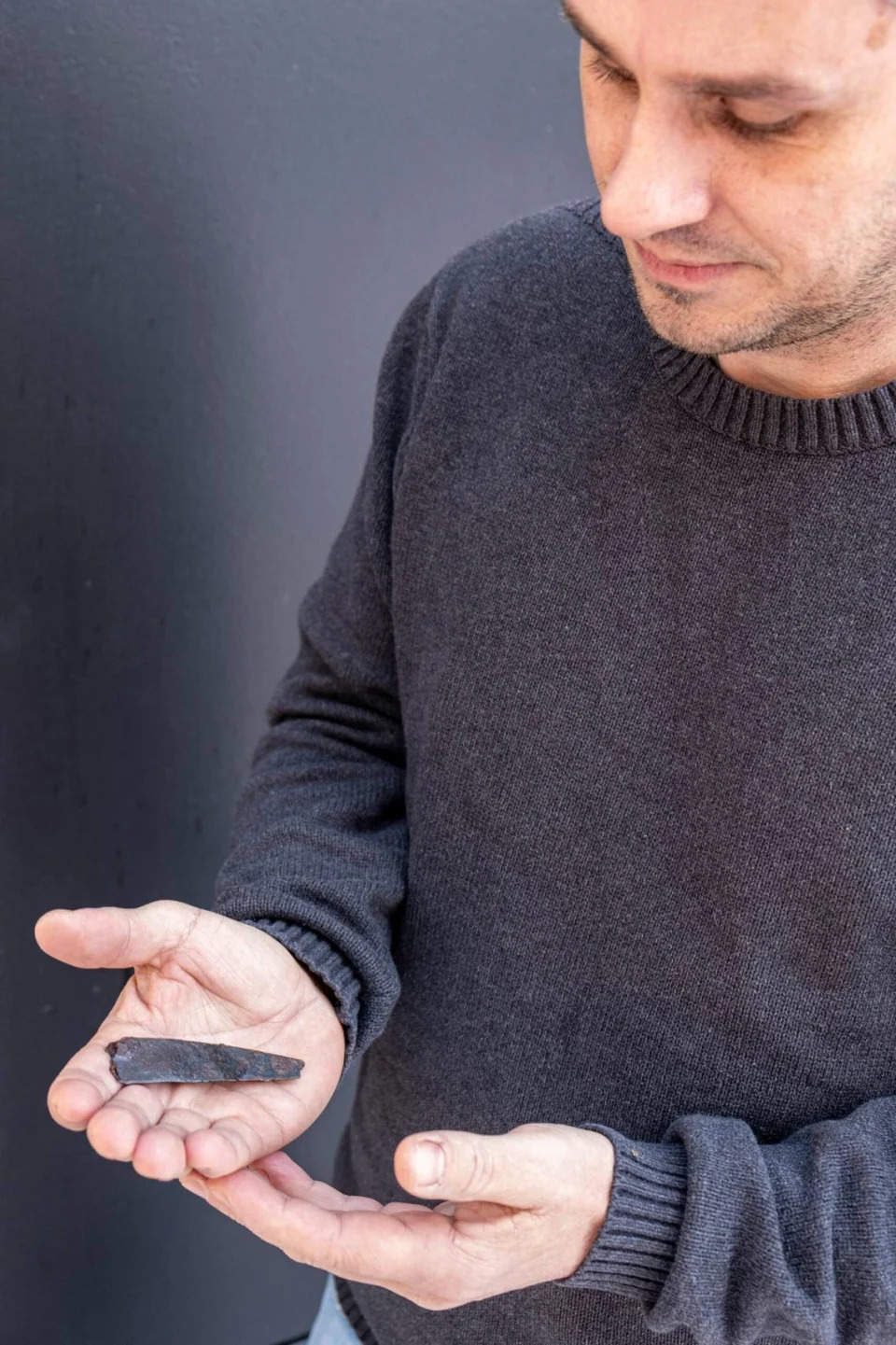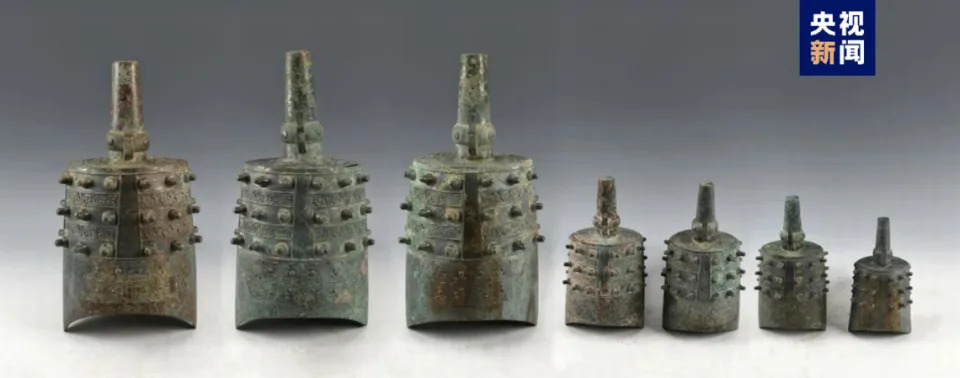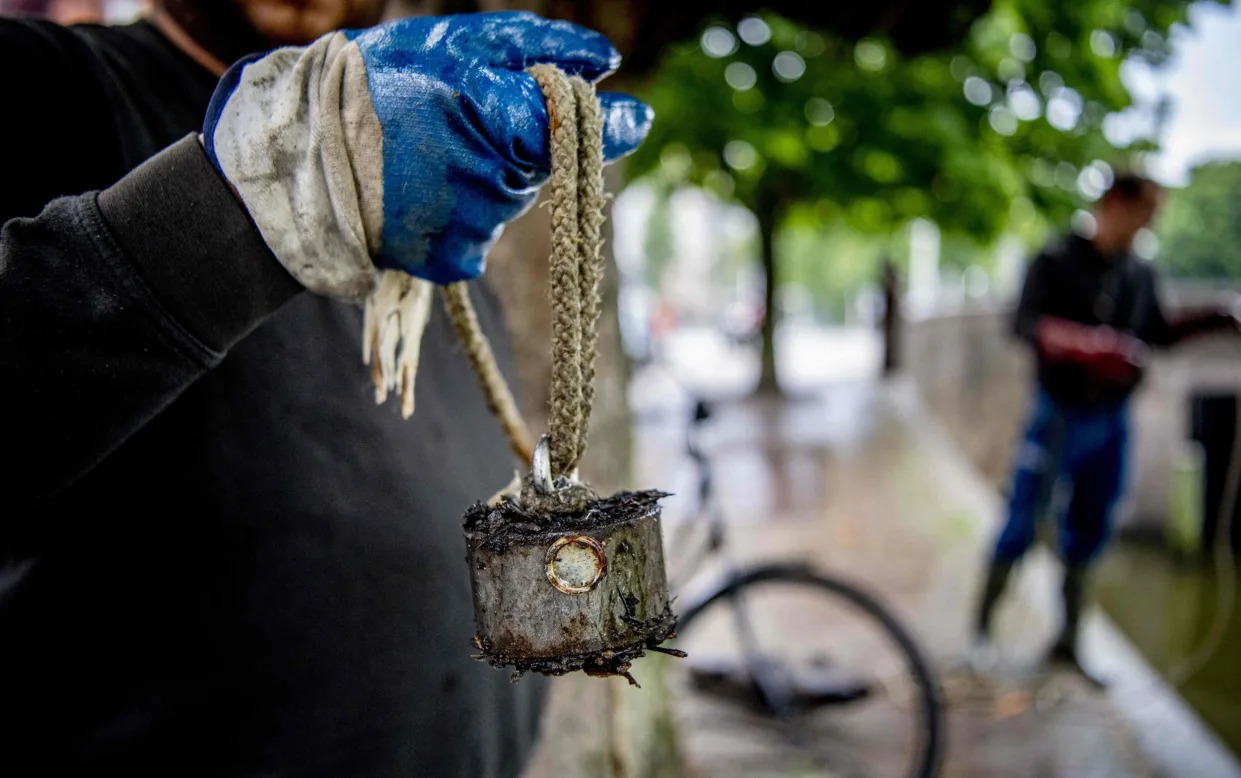Remains of ancient Roman triumphal arch unearthed in Serbia
Story by Reuters
Tue, January 23, 2024 at 11:03 PM MST·2 min read
Braving bitter cold and wind, archaeologists in Serbia surveyed the site of an ancient Roman triumphal arch, one of only a handful in the Balkans, that dates back to the third century.
The triumphal arch was discovered in December at the site of Viminacium, a Roman city near the town of Kostolac, 70 kilometers (45 miles) east of Belgrade.
Miomir Korac, the leading archaeologist, said the discovery was made during excavation of the main street of Viminacium, the capital of the Roman province of Moesia.
“This is the first such triumphal arch in this area… It can be dated to the first decades of the third century AD,” Korac told Reuters on Monday.

Archaeologists estimate they have only scoured 5% of the 450-hectare excavation site, which they say is unusual in not being buried under a modern city. - Branko Filipovic/Reuters
Viminacium was a sprawling Roman city of 45,000 people with a hippodrome, fortifications, a forum, palace, temples, an amphitheatre, aqueducts, baths and workshops. It existed between the first and sixth centuries.
“When we found square foundational footprints made of massive limestone pieces… there was no doubt that this was a triumphal arch,” Korac said.
A fragment of a marble slab with letters reading “CAES/ANTO” suggested that the arch was dedicated to Emperor Marcus Aurelius Antoninus, known as Caracalla, who reigned from 198 to 217 AD.
It is believed that Caracalla was elevated to emperor in Viminacium, said Mladen Jovicic, an archaeologist.
“We are hoping to find more pieces… We have found one finely made pillar, beams, but we would like to find more from the inscription on the arch,” Jovicic said.

Archaeologists made the discovery while excavating Viminacium, the capital of the Roman province of Moesia. - Branko Filipovic/Reuters
Excavations of Viminacium have been going on since 1882, but archaeologists estimate they have only scoured 5% of the site, which they say is 450 hectares — bigger than New York’s Central Park — and unusual in not being buried under a modern city.
Discoveries so far include two Roman ships, golden tiles, coins, jade sculptures, religious items, mosaics, frescos, weapons and remains of three mammoths.
Inscribed blade hid under grave for almost 1,900 years — until now. What does it say?
Moira Ritter
Tue, January 23, 2024 at 7:19 AM MST·1 min read
Nearly 1,900 years ago, an ancient inhabitant of what is now Denmark was cremated and buried in an urn. Before they were buried though, a hole was dug and a treasured knife with a special inscription was placed beneath their grave.
That’s where the blade has stayed — until now.
Archaeologists from the Museum Odense recently unearthed the runic blade, according to a Jan. 22 Facebook post from the museum. The discovery marks the oldest known runes in Denmark.

Archaeologists said the knife dates to approximately 150. Møntergården Museum of Odense and Funen
Experts said the small knife dates back to about 150 A.D., and it is inscribed with a message using the oldest known rune alphabet.
The five runes spell the name “hirila,” which translates to “little sword” in Old Norse, the museum said in a news release. Archaeologists are unsure whether “little sword” referred to the blade’s owner or the blade itself.
Photos shows both sides of the blade: one with the runes and the other with an intricate chevron-like pattern followed by three holes.

The runes are the oldest known in Denmark, according to experts.
All rights reserved photograph Rógvi N. Johansen, Museum Odense

The blade was buried beneath an urn grave, experts said.

The blade was buried beneath an urn grave, experts said.
All rights reserved photograph Rógvi N. Johansen, Museum Odense,
The grave and knife were found in Tietgenbyen, less than 10 miles from the site where a similar discovery was made in 1865, experts said. That’s when archaeologists unearthed a comb from the same time period with a runic inscription meaning “harja.”
Archaeologists said the knife was likely a treasured possession to its owner.
Google Translate and Facebook were used to translate a news release and Facebook post from the Museum Odense.
Grave robber looted 2,400-year-old tomb in China — but left these treasures behind
The grave and knife were found in Tietgenbyen, less than 10 miles from the site where a similar discovery was made in 1865, experts said. That’s when archaeologists unearthed a comb from the same time period with a runic inscription meaning “harja.”
Archaeologists said the knife was likely a treasured possession to its owner.
Google Translate and Facebook were used to translate a news release and Facebook post from the Museum Odense.
Grave robber looted 2,400-year-old tomb in China — but left these treasures behind
Aspen Pflughoeft
Tue, January 23, 2024
In a cemetery in central China, a grave robber started to dig. The thief tunneled into an ancient tomb, stole some artifacts and vanished. The robbery, however, was only partially successful.
When archaeologists excavated the looted tomb, they realized the robber had left some rare treasures behind.
The Taosi Relic Site and Cemetery is a massive ancient cemetery in Shanxi Province that may have as many as 10,000 tombs, according to a 2018 news release from China Archaeology Network. Excavations of the cemetery have been ongoing for years, but archaeologists have only explored a fraction of the site.
During these excavations, archaeologists uncovered a 2,400-year-old tomb that had been looted by a grave robber, according to a Jan. 21 news release from CCTV News via the Institute of Archaeology at the Chinese Academy of Social Sciences and the China Archaeology Network.
The robber had entered the tomb in 2016 through a hole in one corner, the institute said. The thief stole artifacts from this corner but left most of the grave undisturbed.

Some of the chimes found at the 2,400-year-old tomb.
Archaeologists unearthed a large number of high-quality artifacts from the 2,400-year-old tomb. They found a set of 16 chimes engraved with sayings, weapons and jade artifacts.
A photo shows some of the ancient musical instruments found in the tomb.

A close-up of a chime found at the 2,400-year-old tomb.
The tomb also contained a bronze drum base, archaeologists said. The base has a hollow shape where a drum would be inserted. Measuring about 33 inches across, the newly found base is among the largest of these types of artifacts ever found in China.
Based on the artifacts found in the 2,400-year-old tomb, archaeologists believe the tomb belongs to a high-ranking aristocrat with significant power.

Another artifact found at the 2,400-year-old tomb.
Officials recovered some bronze artifacts stolen from the Taosi Cemetery in 2022, the institute said.
Taosi Relic Site and Cemetery is in Shanxi Province and about 250 miles southwest of Beijing.
Google Translate and Baidu Translate were used to translate the news release from CCTV News via the Institute of Archaeology at the Chinese Academy of Social Sciences and the China Archaeology Network.
Don’t use magnets to seek treasure, experts warn after technique damages Viking sword found in river
Craig Simpson
Tue, January 23, 2024

A magnet fisherman shows his equipment
The British Museum has urged detectorists not to go “magnet fishing” to retrieve treasure after a Viking sword was damaged while being dredged from a river.
A record number of finds, from Iron Age coin hoards to Tudor rosary beads, are being unearthed in the UK, according to the Portable Antiquities Scheme (PAS) run by the British Museum.
But experts are determined to persuade those seeking treasure to stop using the increasingly popular technique of “fishing” for artefacts in waterways using powerful magnets.
They say the risks of the method include blowing up unexploded ordnance, and damaging artefacts.
The warning from the PAS comes after a Viking sword was damaged while being pulled out of the River Wallers Haven in Suffolk. The remains of the hilt fell off and were lost in the river.
Risks include explosives and drowning
The scheme experts wrote: “‘Fishing’ for metal objects with powerful magnets in lakes and waterways has become increasingly popular. However, there are many risks involved, including finding unexploded ordnance and possibly drowning.
“There is also the risk of damage to the object and its archaeological context, particularly at sites of ritual deposition. The PAS advises against this activity, which is banned by the Canal and River Trust on its waterways.”
The method also erases important archaeological context which offers clues as to the meaning of objects, and what they were used for.
In 2022, a record haul of archaeological finds were made in the UK, with detectorists largely responsible for the 53,490 discoveries.
Among the finds were an Iron Age hoard of coins in a flint container, and an eerie rosary bead carved in bone during the Tudor period, when the position of Catholics in Britain was precarious.
Thanks for detectorists
One side of the delicately carved object, found on the banks of the Thames near the City of London, shows the face of a young woman, but the other depicts a skull, reminding the owner of their mortality.
Mark Jones, the interim director of the British Museum, said: “The information about finds is being recorded by the PAS to advance knowledge of past peoples, where and how they lived.
“As such, it reflects every part of human history, from the Palaeolithic to more modern times, across the whole of England and Wales.
“Most of the finds recorded have been found by members of the metal-detecting community and I wanted to especially thank them for recording these items with the PAS.”
No comments:
Post a Comment